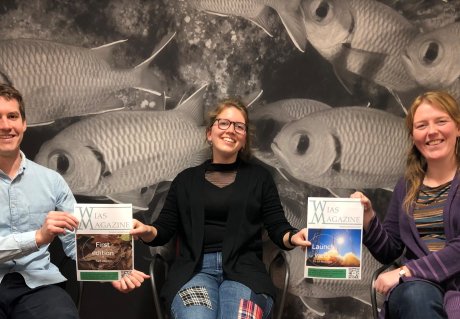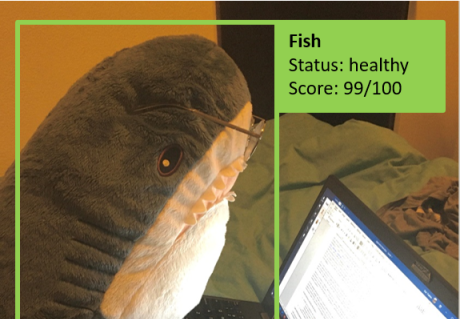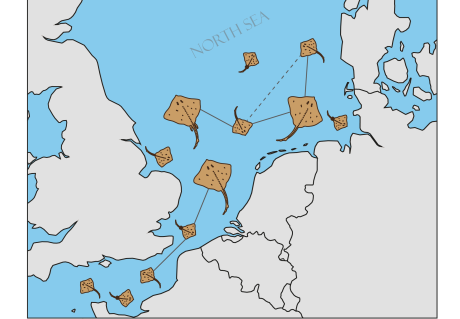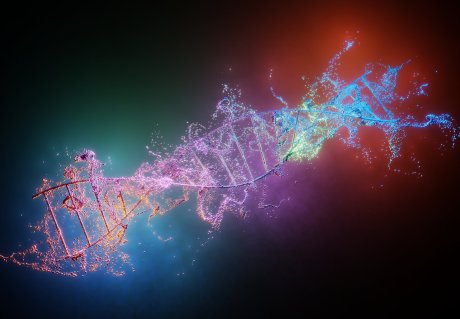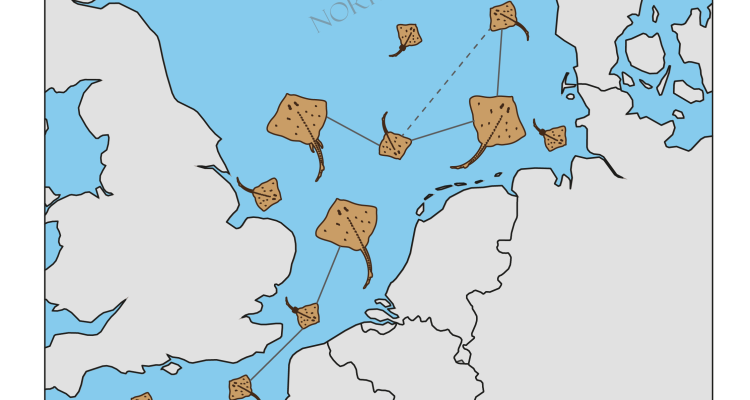
How to count what’s hidden beneath the ocean’s surface: The elusive population size of rays in the North Sea
WIAS magazine - Fall edition 2021
Research light
Keywords: thornback ray, blonde ray, population size, close-kin mark recapture, sustainability, fisheries
The populations of rays, flat bodied relatives of sharks with wing like fins, in the North Sea have been drastically decreased over the last 50 years. Little is known about their exact population sizes. Kinship among rays may help to shed a light on how many rays are currently inhabiting the North Sea. Timo Staeudle, a marine ecologist and PhD candidate at Wageningen University and Research, is obtaining this kinship information from the similarities and differences found in the genetic code of ray individuals.
The fishing pressure on rays in the North Sea has steadily increased with the industrialisation of fishing fleets since the 1970, resulting in a continuous decrease in catches of rays, flat bodied relatives of sharks. In more recent years, a reversal of the downward trend of catches is being observed by the fishing industry with the more recent reduction in fishing effort. The fishing industry, environmental organisation and EU states are interested in the abundance and conservation of rays in the North Sea, as they are often associated with playing a crucial role in the regulation of healthy and diverse ecosystems in the ocean. They predate on lower trophic levels in the marine food while they are at the same time also being commonly predated on by other predators. The North Sea ecosystems on the other hand contribute to the provision of over 3 billion people worldwide with a major source of animal protein. For the fishing industry in the North Sea the thornback ray and blonde ray are of interest as they represent a commercially important bycatch in flatfish fisheries. A shared fishing quota for all the 12 ray species found in the North Sea has been introduced in the 2000s, as too little information is known about the population status of each ray species to implement species-specific quotas. The drawback of such as shared quota is that it could bring an otherwise sustainable fishery to an early end if the shared quota for ray catches are exceeded.
To estimate the number of thornback and blonde rays in the North Sea a collaboration has formed between Wageningen University and Research, Wageningen Marine Research, the fishing industry in the Netherlands and environmental non-governmental organisations. Small tissue samples of rays have been collected from scientific surveys and fishing vessels all over the North Sea. Timo investigates the similarity and variation in the genetic code (DNA) of the rays and evaluates how the individual rays are related to each other, such as parent-offspring or half-sibling pairs. The number and types of kinship pairs found can then be used to estimate the total population size for each species.
“Compare this approach to trying to estimate the population size of a smaller country like Luxembourg and larger country as Germany. Attempting to get a count of every single person becomes more challenging the larger the population size. Instead, we can choose to randomly select a relatively small number of individuals across the country and record how closely they are related to each other. The chance of recording a lot of closely related people, and therefore kinship pairs, is higher in a smaller population than for a larger one. We can apply this concept to thornback and blonde rays in the North Sea to estimate the total size of their populations from the type and amount of kinship pairs discovered.” – Timo Staeudle
Timo is currently in the process of revealing the kinship pairs hidden in the genetic code of the samples of thornback and blonde rays (Figure 1). For thornback ray, 8 likely pairs of half-siblings have already been identified. By providing a better understanding of the population sizes, Timo is aiming to help inform the fishing industry, environmental organisation and policy makers to make informed decision on the appropriate management strategies to help these ray to bounce back from their decline since the 1970s and set sustainable quotas for the fishing of rays in the North Sea.
“We have the moral obligation towards our and future generations to inform and shape sustainable fishing practises for healthy fish populations and marine ecosystem, because of our previous history of overexploitations of marine ecosystems.” – Timo Staeudle
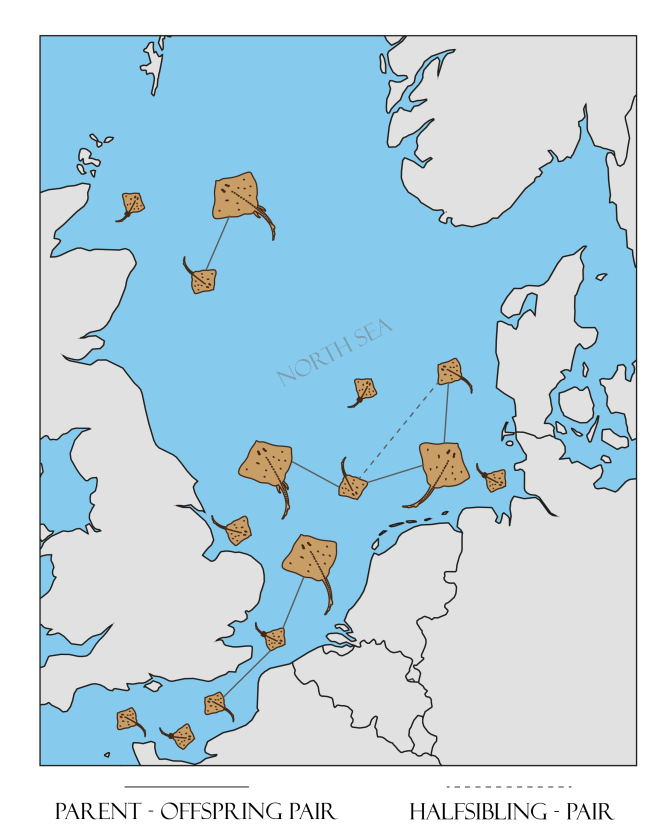
Figure 1. Close-Kin Mark Recapture (CKMR) in the North Sea. The aim is to detect kinship pairs among sampled rays in the North Sea from which total population size can be estimated. A solid line indicates a Parent-Offspring pair and a dashed line indicates a Half-Sibling pair.
